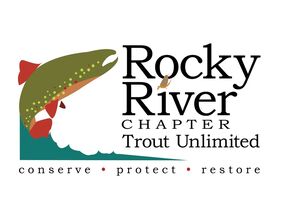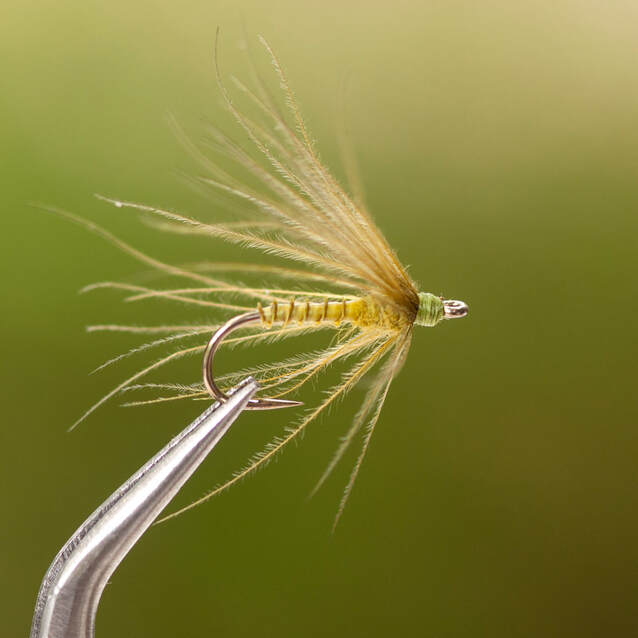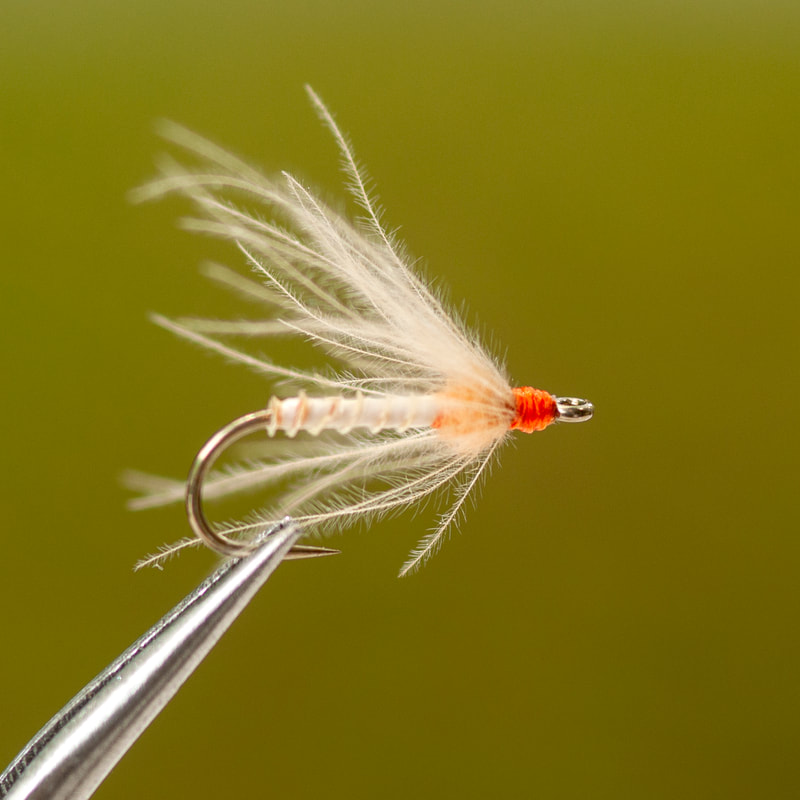Fly of the Month 05.21 - Puff Daddy
Fly fishing the tailraces in Tennessee is one of our favorite adventures. And to help the newcomer to get started with our nearest tailrace fisheries here is a simple, highly productive fly. This fly pattern is easy to tie but may be challenging to use at first. The challenge is learning to use “frog fanny” or dry fly drying powder rather than floatant to restore the floatability of the fly pattern, especially after catching a fish that slobbered on your fly. CDC feather material is used as the hackle or collar. The delicate, natural oils of the CDC are easily restored by using a drying powder. Most fly floatant will actually reduce CDC buoyancy.
Puff Daddy
A few years ago, after fly fishing the South Holston River tailrace, Jim Dean wrote an article titled “Make Room for Puff Diddies” in Fly Fisherman magazine in the summer issue, 2013. He was very impressed by a local fly pattern he discovered and successfully used. He wrote “Puff Diddies don’t look like much but in the right sizes and colors, they imitate mayfly cripples, knockdowns, and duns. Use them for everything from Blue-winged Olive hatches to large Western Green Drakes.” He eluded to fly patterns that are so versatile and effective that they quickly become essential and achieve a "super fly" reputations.
Dean wrote “In recent years, my friends (John Monroe and Jason Reep) and I have been experimenting with a dry fly that may be a worthy candidate for admission into this exalted company (super fly status). Called the Puff Daddy, Puff Diddy, or simply Puffie, it is a simple dry fly tied with a biot or thin dubbing body, and completed with a few sparse turns of a stemmed CDC feather wrapped just behind the head—no tail, no wing, nothing fancy whatsoever. The encircling CDC fibers form a somewhat ragged and nearly diaphanous veil that tends to make the fly float on its side, partially obscuring the hook, and keeping the hook point above the surface film.”
Since the 1920s, fly tiers in Europe have used CDC. Some patterns are similar to Puff Diddies, including Marjan Fratnik's F Flies which was introduced in France in 1980. However, Fratnik uses CDC as a wing rather than wrapping it to encircle the hook as a collar. Terry Melvin of Elizabethton, Tennessee has been credited locally with developing a prototype about 15 years ago (i.e. 1998) —a simple gray CDC, black-body pattern called "Dawayne." John Monroe changed the colors of Melvin's fly to better match Sulphurs and Blue-winged Olives that hatch on the Watauga and South Holston River tailraces, and began calling his versions Puff Diddies.
The Puff Daddy is now a proven fly on Tennessee tailraces, on Pennsylvania's limestone streams and on Western rivers and spring creeks in Montana and Idaho. They fool those notoriously selective Harriman Ranch rainbows on the Henry's Fork in Idaho. René Harrop and his wife Bonnie (and their daughter Leslie), have been tying innovative imitations with CDC material for years, and René's articles and books have spurred CDC's popularity in the states.
Sulphur Puff Daddy
Olive Puff Daddy
Tom Adams and Alen Baker
Puff Diddy Recipe
Hook : TMC 100 or equivalent size 12,14,16,18
Thread : Uni 8/0 Orange or equivalent or to match pattern
Abdomen : Yellow Goose Biot or to match pattern
Thorax: Beaver dry fly dubbing orange or match pattern
Wing : Tan CDC or match pattern
Directions :
- Debarb and mount the hook in the vise, attach the thread and advance to the hook bend and let the bobbin hang
- Select a goose biot and tear away from the stem. The “notch” at the stem end of the biot will face the hook eye. This will leave a fuzzy edge when wrapped. Tie in the biot by the tip and advance the thread to the one third mark and let the bobbin hang.
- Advance the biot in touching turns to the thread and secure with two or three wraps. Trim the waste biot and let the bobbin hang.
- Dub the thread with the dry fly dubbing and form a small thorax leaving room at the eye for the CDC wraps and a small thread head.
- Select a CDC feather. The CDC barbs should be about the same length as the hook shank. Prep the feather by stroking the barbs, making them stand out at ninety degrees. Tie the CDC in by the tip. Make wraps of the CDC in tight touching turns starting at the dub and advancing to the hook eye. Maintain the curve of the CDC toward the hook bend. Keep the CDC at right angles to the hook bend while wrapping. Stroke the barbs toward the hook bend. These will keep the barbs from bunching. Secure the CDC at them stem while stroking the barbs back with two wraps of thread. Cut the CDC and make several more thread wraps while forming a small thread head. Whip finish and cut the thread.


